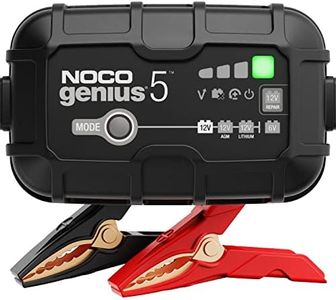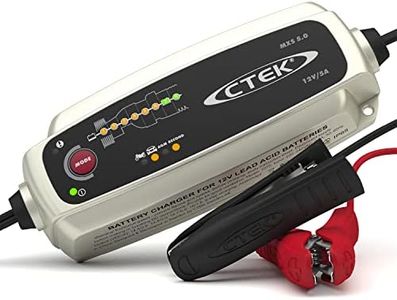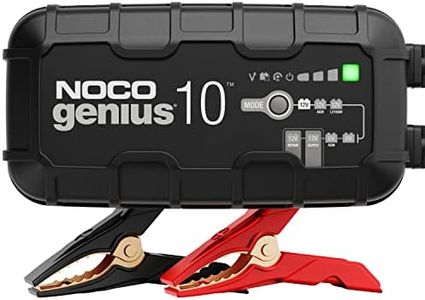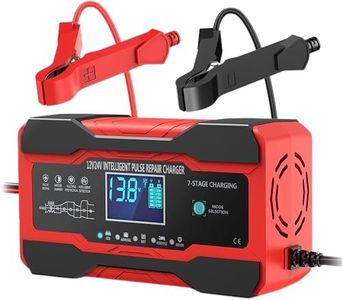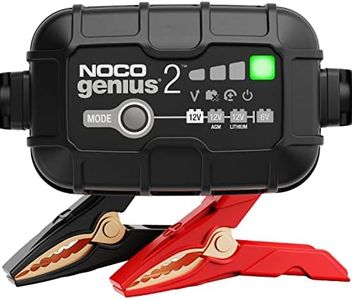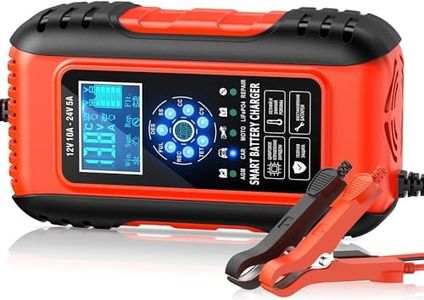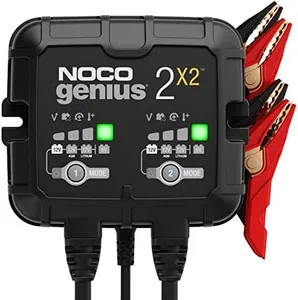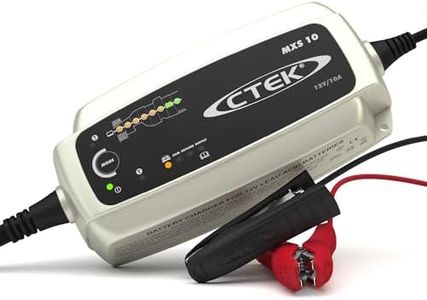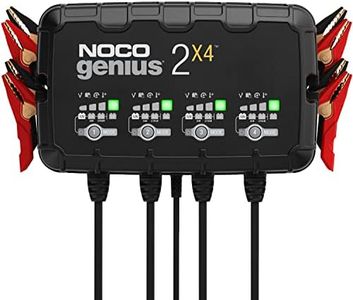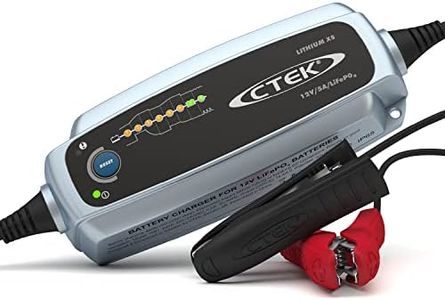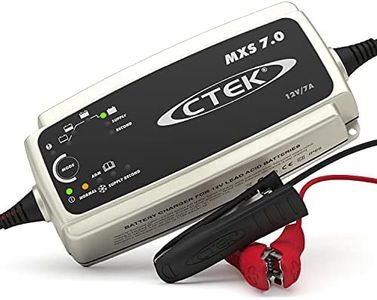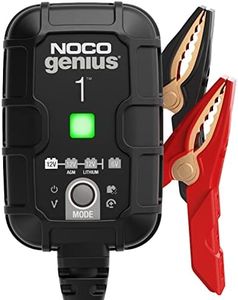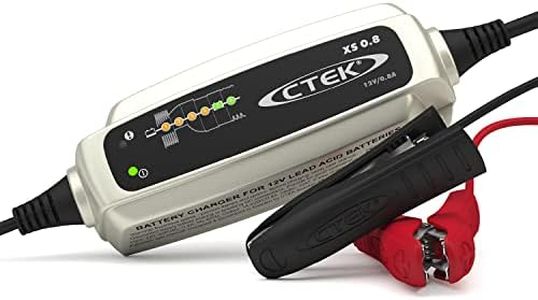We Use CookiesWe use cookies to enhance the security, performance,
functionality and for analytical and promotional activities. By continuing to browse this site you
are agreeing to our privacy policy
10 Best Trickle Chargers
From leading brands and best sellers available on the web.Buying Guide for the Best Trickle Chargers
Trickle chargers are devices designed to slowly recharge and maintain the battery level of vehicles or other battery-powered items, such as cars, motorcycles, lawnmowers, or boats. Using a trickle charger can help extend the life of your battery, prevent it from dying during periods of inactivity, and ensure your vehicle is ready to go when you need it. Choosing the right trickle charger for your needs means understanding a few key features to make sure the charger is safe and effective for your battery and usage situation.Amperage OutputAmperage output tells you how much current the trickle charger sends to your battery per hour. This is important because higher amperage can charge a battery faster, but too much current can damage certain types of batteries, especially if left on for long periods. Most trickle chargers provide 0.5 to 2 amps – 0.5 to 1 amp is ideal for keeping smaller batteries topped up over a long time, while 1 to 2 amps is suitable for faster charging or for larger batteries. If you are looking mainly to maintain battery life over weeks or months, a lower amp output is safer, while those needing occasional quicker top-ups for larger vehicle batteries may prefer a charger closer to 2 amps.
Voltage CompatibilityVoltage compatibility refers to whether the trickle charger matches the voltage of your battery. The most common voltages are 6V and 12V, with 12V common in cars and larger vehicles, and 6V in some motorcycles or older vehicles. It's crucial to match the charger to your battery's voltage, as using the wrong voltage can damage your battery or the charger. Choose a charger that supports your battery’s voltage; some chargers are switchable or automatic and can support both 6V and 12V.
Automatic Shutoff / Float ModeAutomatic shutoff or float mode means the charger can detect when your battery is fully charged and will either stop charging or switch to a maintenance mode, supplying only enough power to keep the battery at optimal charge. This feature is important to prevent overcharging, which can shorten battery life or even cause dangerous situations like overheating. Chargers with automatic shutoff or float mode are ideal for users who plan to leave the charger connected for extended periods, like over winter storage.
Safety FeaturesSafety features include protection against sparks, reverse polarity (connecting the clamps incorrectly), short circuits, and overcharging. These features matter because they make the charger safer to use, especially for less experienced users. Chargers with clear safety features and indicators are preferable for anyone who values peace of mind, especially if you’re new to using trickle chargers or plan to use them in a home garage environment.
Weather ResistanceWeather resistance refers to how well the charger can handle outdoor use, moisture, and temperature changes. Some trickle chargers are designed with weatherproof or water-resistant housing, making them suitable for use in sheds, garages, or outdoor parking areas. If you expect to charge your battery in unpredictable or damp areas, look for a model with good weather resistance. For indoor use or controlled environments, this may be less of a concern.
Ease of ConnectionEase of connection describes how simple and convenient it is to connect the charger to your battery. Some chargers use alligator clips, while others may have ring terminal connectors for longer-term attachment. Consider how often you'll be connecting and disconnecting the charger—if you plan to use it frequently or on multiple batteries, you may want a model with quick-connect options and clear indicators so you’re not fussing with the setup each time.
